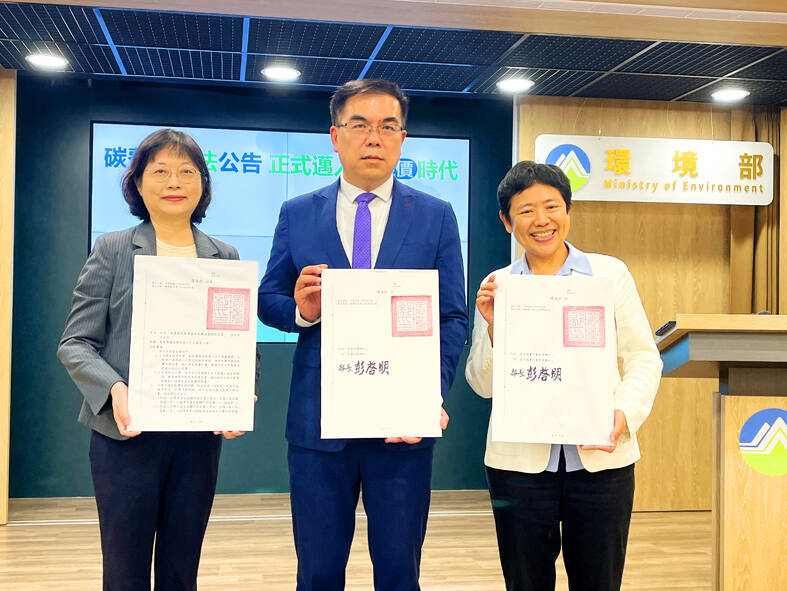
Key Points and Statistics on the Combined Heat and Power Market:
- The global combined heat and power market size is projected to expand to USD 33,801 Million by 2030, growing at a CAGR of 6.3% from 2022 to 2030.
- The market includes capacities ranging from up to 10 MW, 10 MW to 150 MW, 150 MW to 300 MW, and above 300 MW.
- Fuel types include natural gas, coal, biomass, and others.
- Technologies covered are gas turbine, steam turbine, reciprocating engine, fuel cell, and microturbine.
- End uses include residential, commercial, and industrial sectors.
- Key regions include North America, Europe, Asia Pacific, Latin America, and the Middle East & Africa, with major markets in the U.S., Germany, France, China, and India.
- Prominent players in the market include Mitsubishi Hitachi Power Systems, GE Power, Siemens, Veolia, Wartsila, 2G Energy, Man Diesel & Turbo, Clarke Energy, Caterpillar Energy Solutions (MWM), AB Holding, FuelCell Energy, and Capstone.
Combined Heat and Power Market Overview and Analysis:
The CHP market is a crucial component of the global energy landscape, known for its high reliability, economical and environment-friendly nature. The market is driven by rapid industrialization, increasing manufacturing processes, and high government spending on electricity generation infrastructure. However, high initial investment costs and a growing inclination towards renewable power generation may challenge market growth.
Latest Combined Heat and Power Market Trends and Innovations
- The deployment of micro-CHP mechanisms is on the rise. Micro-CHP systems are small-scale CHP systems that are typically installed in residential and commercial buildings. They are becoming increasingly popular due to their efficiency and cost-effectiveness.
- There is a growing trend of distributed power generation, especially for gas turbine-based CHP systems. Distributed power generation refers to the generation of electricity at or near the point of consumption. This can help to reduce transmission and distribution losses, and can also provide greater reliability and resilience to the power grid.
- Collaborative projects between public and private entities are boosting market growth. These projects often involve the development of CHP systems that can be used to provide heat and power to multiple buildings or facilities. This can be a cost-effective way to reduce energy costs and greenhouse gas emissions.
Major Growth Drivers of the Combined Heat and Power Market
- Increasing government incentives and programs to promote CHP are a major growth driver for the market. Governments around the world are recognizing the benefits of CHP, and are providing financial incentives to encourage its adoption.
- Significant advantages of CHP systems in wastewater treatment centers are also driving market growth. CHP systems can be used to generate electricity and heat from the waste heat produced by wastewater treatment plants. This can help to reduce energy costs and greenhouse gas emissions, and can also improve the efficiency of wastewater treatment plants.
- The rise in natural gas use for power production and reducing reliance on traditional coal-fired power plants is another major growth driver for the CHP market. Natural gas is a clean and efficient fuel that is well-suited for CHP applications.
Key Challenges Facing the Combined Heat and Power Industry
- Higher costs for CHP system installation and upkeep are a key challenge facing the industry. CHP systems can be more expensive to install and maintain than traditional power plants. This can make it difficult for CHP to compete in markets where the price of electricity is low.
- Growing concerns over stable liquefied natural gas (LNG) supply for CHP systems are also a challenge. LNG is a key fuel for CHP systems, and concerns over its stable supply could dampen demand for CHP.
Despite these challenges, the combined heat and power market is expected to continue to grow in the coming years. The increasing adoption of CHP systems in residential, commercial, and industrial applications will drive market growth.
Market Segmentation Insights:
- By Capacity:
- Up to 10 MW
- 10 MW to 150 MW
- 150 MW to 300 MW
- Above 300 MW
- By Fuel:
- Natural Gas
- Coal
- Biomass
- Others
- By Technology:
- Gas Turbine
- Steam Turbine
- Reciprocating Engine
- Fuel Cell
- Microturbine
- By End Use:
- Residential
- Commercial
- Industrial
Overview by Region of the Combined Heat and Power Market:
North America is expected to account for a major revenue share due to high government spending on CHP infrastructure. Asia Pacific is anticipated to witness rapid growth due to industrialization in developing countries and an inclination towards untapped markets in emerging economies.
Combined Heat and Power Market Table of Content:
- Industry Overview of Combined Heat and Power Market
- Research Approach
- Market Dynamics And Competition Analysis
- Combined Heat and Power Market Revenue By Capacity
- Combined Heat and Power Market Revenue By Fuel
- Combined Heat and Power Market Revenue By Technology
- Combined Heat and Power Market Revenue By End Use
- North America Combined Heat and Power Market By Country
- Europe Combined Heat and Power Market By Country
- Asia-Pacific Combined Heat and Power Market By Country
- Latin America Combined Heat and Power Market By Country
- Middle East & Africa Combined Heat and Power Market By
SDGs, Targets, and Indicators Analysis
1. Which SDGs are addressed or connected to the issues highlighted in the article?
- SDG 7: Affordable and Clean Energy
- SDG 9: Industry, Innovation, and Infrastructure
- SDG 11: Sustainable Cities and Communities
- SDG 13: Climate Action
The article discusses the combined heat and power market, which is related to the generation of affordable and clean energy (SDG 7). It also mentions the market’s role in industrialization and infrastructure development (SDG 9), as well as its impact on residential, commercial, and industrial sectors (SDG 11). Additionally, the article highlights the environmental benefits of combined heat and power systems, which contribute to climate action (SDG 13).
2. What specific targets under those SDGs can be identified based on the article’s content?
- Target 7.2: Increase the share of renewable energy in the global energy mix
- Target 9.1: Develop quality, reliable, sustainable, and resilient infrastructure
- Target 11.6: Reduce the environmental impact of cities
- Target 13.2: Integrate climate change measures into national policies, strategies, and planning
The article mentions the growing trend of distributed power generation and the deployment of micro-CHP mechanisms, which contribute to increasing the share of renewable energy (Target 7.2). It also highlights the reliability and environmental-friendliness of combined heat and power systems, which align with the goal of developing sustainable and resilient infrastructure (Target 9.1). Furthermore, the article discusses the reduction of greenhouse gas emissions and the improvement of energy efficiency in wastewater treatment plants, which contribute to reducing the environmental impact of cities (Target 11.6) and integrating climate change measures (Target 13.2).
3. Are there any indicators mentioned or implied in the article that can be used to measure progress towards the identified targets?
- Indicator 7.2.1: Renewable energy share in the total final energy consumption
- Indicator 9.1.1: Proportion of the rural population who live within 2 km of an all-season road
- Indicator 11.6.1: Proportion of urban solid waste regularly collected and with adequate final discharge out of total urban solid waste generated, by cities
- Indicator 13.2.1: Number of countries that have communicated the establishment or operationalization of an integrated policy/strategy/plan which increases their ability to adapt to the adverse impacts of climate change and foster climate resilience and low greenhouse gas emissions development in a manner that does not threaten food production
The article does not explicitly mention these indicators, but they can be used to measure progress towards the identified targets. For example, Indicator 7.2.1 can measure the share of renewable energy in the total final energy consumption, Indicator 9.1.1 can measure the accessibility of reliable infrastructure to the rural population, Indicator 11.6.1 can measure the effectiveness of waste management systems in cities, and Indicator 13.2.1 can measure the implementation of integrated policies/strategies/plans for climate change adaptation.
4. Table: SDGs, Targets, and Indicators
SDGs Targets Indicators SDG 7: Affordable and Clean Energy Target 7.2: Increase the share of renewable energy in the global energy mix Indicator 7.2.1: Renewable energy share in the total final energy consumption SDG 9: Industry, Innovation, and Infrastructure Target 9.1: Develop quality, reliable, sustainable, and resilient infrastructure Indicator 9.1.1: Proportion of the rural population who live within 2 km of an all-season road Target 9.1: Develop quality, reliable, sustainable, and resilient infrastructure Indicator 9.1.1: Proportion of the rural population who live within 2 km of an all-season road SDG 11: Sustainable Cities and Communities Target 11.6: Reduce the environmental impact of cities Indicator 11.6.1: Proportion of urban solid waste regularly collected and with adequate final discharge out of total urban solid waste generated, by cities Target 11.6: Reduce the environmental impact of cities Indicator 11.6.1: Proportion of urban solid waste regularly collected and with adequate final discharge out of total urban solid waste generated, by cities SDG 13: Climate Action Target 13.2: Integrate climate change measures into national policies, strategies, and planning Indicator 13.2.1: Number of countries that have communicated the establishment or operationalization of an integrated policy/strategy/plan which increases their ability to adapt to the adverse impacts of climate change and foster climate resilience and low greenhouse gas emissions development in a manner that does not threaten food production Copyright: Dive into this article, curated with care by SDG Investors Inc. Our advanced AI technology searches through vast amounts of data to spotlight how we are all moving forward with the Sustainable Development Goals. While we own the rights to this content, we invite you to share it to help spread knowledge and spark action on the SDGs.
Fuente: openpr.com

Join us, as fellow seekers of change, on a transformative journey at https://sdgtalks.ai/welcome, where you can become a member and actively contribute to shaping a brighter future.





